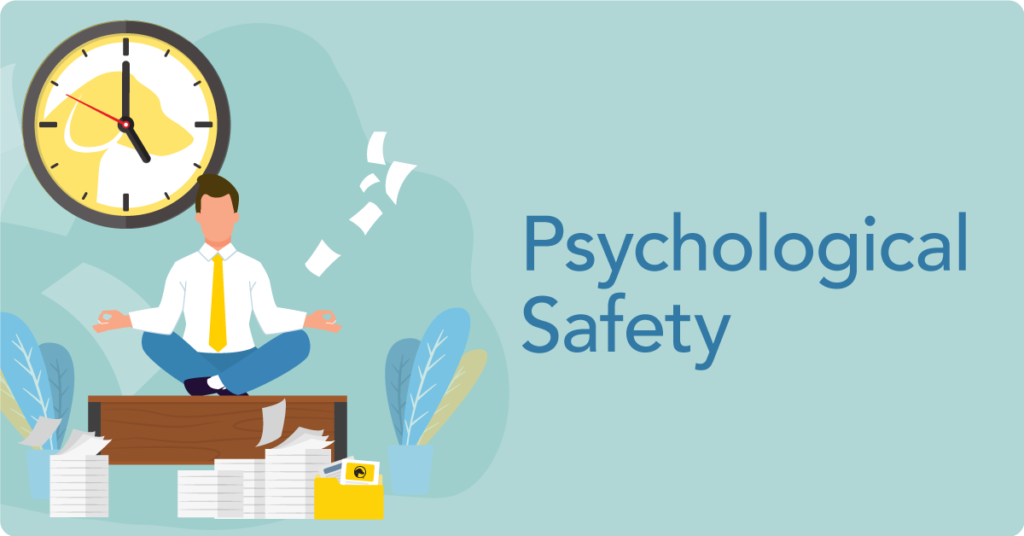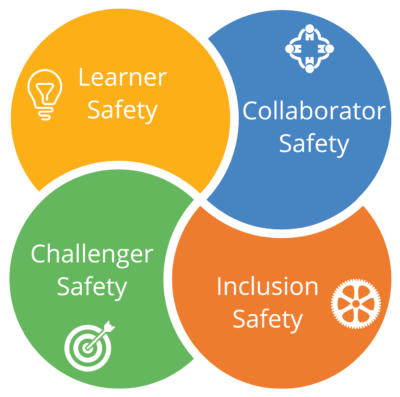Creating Psychological Safety in Teams: The Key to Unlocking Innovation and Collaboration
Over the past few weeks, we’ve explored the importance of Emotional Intelligence (EQ) in building effective teams. One crucial element of EQ is psychological safety, which forms the foundation for trust, collaboration, and innovation. But what is psychological safety, and why is it essential for a thriving workplace?

Psychological safety refers to a shared belief that a team is safe for interpersonal risk-taking. In a psychologically safe environment, team members feel comfortable expressing ideas, asking questions, admitting mistakes, and offering constructive feedback without fear of negative consequences. This environment fosters creativity and innovation, allowing teams to grow and succeed.
What is Psychological Safety?
Psychological safety is the belief that individuals can contribute to discussions, admit their mistakes, and challenge the status quo without facing punishment or ridicule. It’s not just about feeling comfortable; it’s about creating an atmosphere where people are encouraged to take risks, knowing their contributions will be respected.
In today’s fast-paced workplace, psychological safety is critical. Teams that lack it often suffer from groupthink, missed opportunities, and low morale, while teams with high psychological safety are more innovative, engaged, and productive.
The Four Quadrants of Psychological Safety
While psychological safety can seem like a broad concept, it’s helpful to break it down into four key areas, or quadrants. Each quadrant focuses on a different aspect of safety that is vital for creating a well-rounded and high-performing team.

- Learner Safety: This quadrant emphasizes the importance of creating an environment where team members feel safe to ask questions, make mistakes, and seek feedback. It’s about cultivating curiosity and learning without fear of judgment.
- Collaborator Safety: In this quadrant, the focus is on building a culture of openness and trust. Team members should feel safe working with others, sharing ideas, and contributing to group discussions without fear of exclusion or judgment.
- Challenger Safety: Teams thrive when people feel safe to challenge the status quo. This quadrant highlights the importance of encouraging team members to voice their opinions, question decisions, and propose new approaches in a respectful manner.
- Inclusion Safety: Lastly, inclusion safety ensures that all team members, regardless of their background or identity, feel valued and accepted. This is the foundation upon which the other quadrants are built, as people must first feel included before they can fully contribute.
How Bias Impacts Psychological Safety
One of the most significant barriers to psychological safety is bias—whether conscious or unconscious. Bias can erode trust, making certain team members feel marginalized or undervalued. This affects inclusion safety, in particular, but it can also impact how people collaborate or feel comfortable challenging ideas.
To mitigate bias, teams need to be aware of their behaviors and decision-making processes. Creating an inclusive environment requires intentional effort to ensure all voices are heard and valued equally. Addressing bias head-on can significantly improve psychological safety and contribute to a more inclusive, innovative team culture.

Practical Example of Psychological Safety in Action

Let’s take a practical example. Imagine a project team working under a tight deadline. A team member realizes they’ve made an error that could impact the project’s timeline. In a team lacking psychological safety, this person might hide the mistake, hoping to fix it quietly and avoid blame. But in a team with high psychological safety, the team member feels comfortable admitting the mistake early, knowing the focus will be on solving the problem rather than assigning blame. By addressing the issue right away, the team can work together to minimize its impact and learn from the situation.
This openness not only prevents larger issues down the road but also strengthens the team’s ability to navigate challenges and grow from setbacks.
Benefits of Psychological Safety
Fostering psychological safety within your team can lead to a range of benefits, including:
- Increased Innovation: When team members feel safe to take risks and propose new ideas, creativity flourishes.
- Better Collaboration: Open communication and trust lead to stronger relationships and more effective teamwork.
- Enhanced Learning and Growth: Mistakes are treated as learning opportunities, creating a culture of continuous improvement.
Ultimately, psychological safety enables teams to perform at their best by creating an environment where everyone feels valued and empowered to contribute.
Call to Action
Ready to build a more psychologically safe team? Download our Psychological Safety Tool to assess your current environment and discover practical steps for fostering each of the four quadrants of psychological safety. Whether you’re a team leader or team member, this tool will help you create an inclusive, innovative, and high-performing culture.